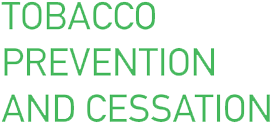CONFERENCE PROCEEDING
Squeezing tobacco outlet density, a trend analysis 2002-2019
1
Menzies Institute of Medical Research, University of Tasmania, Tasmania
Publication date: 2024-10-17
Tob. Prev. Cessation 2024;10(Supplement 1):A28
KEYWORDS
ABSTRACT
Introduction:
There is limited research on how government regulation affects tobacco outlet density over time.
Objectives:
To examine the association between government-imposed tobacco control laws and outlet density between 2002 – 2019.
Methods:
Records of all outlets were obtained from the government-mandated tobacco sellers licensing scheme in one state of Australia, Tasmania (population ~500,000). Trends in density, i.e., retailers per 1000 people, between 2002 and 2019, were analyzed as an annual percentage change (ACP) and by identifying inflection points using standard Joinpoint regression analysis. Trends by retailer type were analyzed from 2010 to 2019.
Results:
The highest retailer density was observed in 2002 (3.17 retailers per 1000 people) and the lowest in 2019 (1.20 retailers per 1000 people). Over the study period, we observed a mean APC of -5.1% of retailer density (CI -5.9% to -4.3%, p>0.001). A dramatic decrease in APC 7.9 % density per year (CI 9.7% to 6% p<0.01) was observed between 2009 and 2013, corresponding to changes in tobacco packaging laws and import taxes. An APC decrease of 8.9 % density per year (CI -10.7% to -7.1% p<0.001) between 2016-2019, which corresponded with a tripling in government licensing fees. Cafes, takeaways, and restaurants were most affected, with their retailer density reducing by -19.8 % per year (CI -23.7% to -14.4%, p< 0.001). No change was observed for supermarkets and tobacconists from 2010 to 2019, with APCs of -0.6% (CI -1.2% to -0.1%, p =0.020) and -3.1% (CI-4.1% to -2.1% p<0.001) respectively.
Conclusions:
Tobacco import tax, a ban on advertising, packaging laws, and license fee increases were associated with reduced tobacco outlet density. Supermarkets and tobacconists – large-volume sellers - were impervious to these levers and may require direct regulation. Whether the changes in tobacco retail outlet density are associated with reduced smoking rates is being investigated.
There is limited research on how government regulation affects tobacco outlet density over time.
Objectives:
To examine the association between government-imposed tobacco control laws and outlet density between 2002 – 2019.
Methods:
Records of all outlets were obtained from the government-mandated tobacco sellers licensing scheme in one state of Australia, Tasmania (population ~500,000). Trends in density, i.e., retailers per 1000 people, between 2002 and 2019, were analyzed as an annual percentage change (ACP) and by identifying inflection points using standard Joinpoint regression analysis. Trends by retailer type were analyzed from 2010 to 2019.
Results:
The highest retailer density was observed in 2002 (3.17 retailers per 1000 people) and the lowest in 2019 (1.20 retailers per 1000 people). Over the study period, we observed a mean APC of -5.1% of retailer density (CI -5.9% to -4.3%, p>0.001). A dramatic decrease in APC 7.9 % density per year (CI 9.7% to 6% p<0.01) was observed between 2009 and 2013, corresponding to changes in tobacco packaging laws and import taxes. An APC decrease of 8.9 % density per year (CI -10.7% to -7.1% p<0.001) between 2016-2019, which corresponded with a tripling in government licensing fees. Cafes, takeaways, and restaurants were most affected, with their retailer density reducing by -19.8 % per year (CI -23.7% to -14.4%, p< 0.001). No change was observed for supermarkets and tobacconists from 2010 to 2019, with APCs of -0.6% (CI -1.2% to -0.1%, p =0.020) and -3.1% (CI-4.1% to -2.1% p<0.001) respectively.
Conclusions:
Tobacco import tax, a ban on advertising, packaging laws, and license fee increases were associated with reduced tobacco outlet density. Supermarkets and tobacconists – large-volume sellers - were impervious to these levers and may require direct regulation. Whether the changes in tobacco retail outlet density are associated with reduced smoking rates is being investigated.
CONFLICTS OF INTEREST
V. Martin-Gall is a part-time Senior Advisor Tobacco and a part-time PhD student. Government-collected tobacco retail licensing revenue may fund the position.
FUNDING
Funding is not provided.
Share
RELATED ARTICLE
We process personal data collected when visiting the website. The function of obtaining information about users and their behavior is carried out by voluntarily entered information in forms and saving cookies in end devices. Data, including cookies, are used to provide services, improve the user experience and to analyze the traffic in accordance with the Privacy policy. Data are also collected and processed by Google Analytics tool (more).
You can change cookies settings in your browser. Restricted use of cookies in the browser configuration may affect some functionalities of the website.
You can change cookies settings in your browser. Restricted use of cookies in the browser configuration may affect some functionalities of the website.

